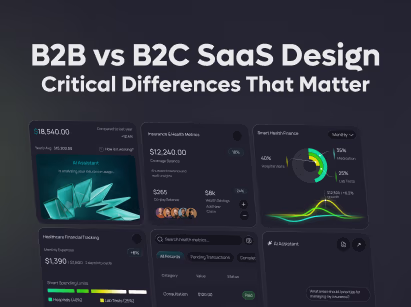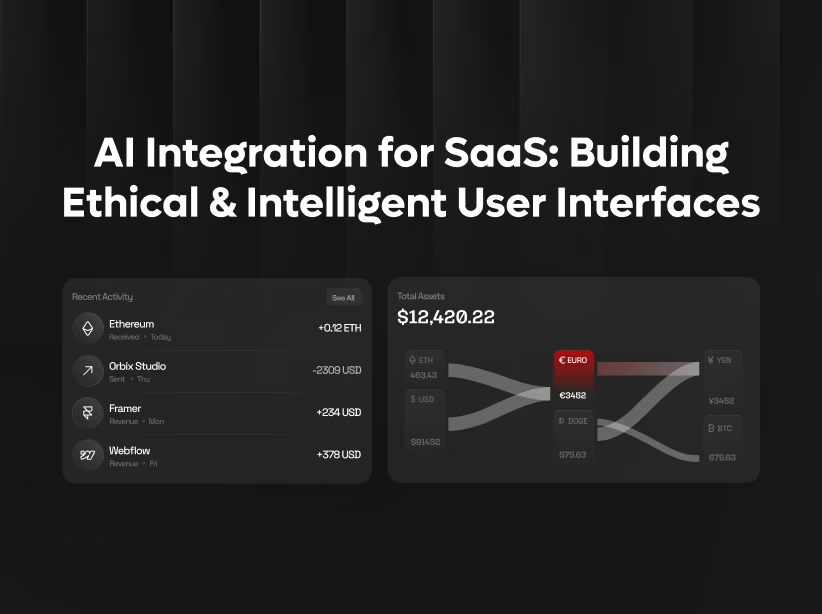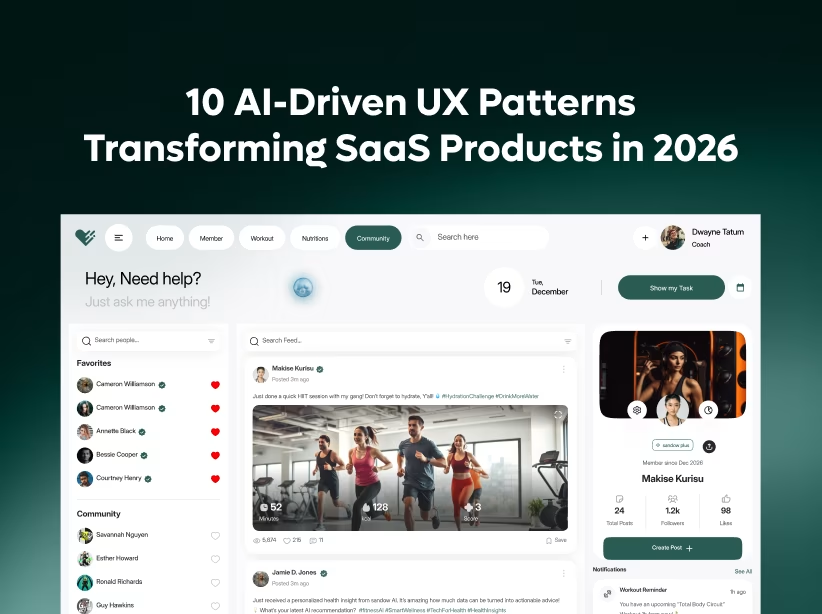Table of Contents
- Why Custom Illustration Matters for SaaS Brand Differentiation
- The Strategic Benefits of Custom Illustration for SaaS
- Types of Custom Illustration for SaaS Applications
- Developing Your Custom Illustration Style
- Implementing Custom Illustration Strategically
- Working with Illustrators: Best Practices
- Common Mistakes to Avoid
- Conclusion: Visual Differentiation as Competitive Advantage

In a sea of identical SaaS products using the same stock photos and generic icons, custom illustration has emerged as the secret weapon for standing out. While competitors blend together with interchangeable visuals, brands like Slack, Dropbox, and Mailchimp prove that distinctive illustration creates instant recognition, emotional connection, and memorable brand experiences that drive conversions.
The data is compelling: SaaS companies using custom illustration see $30\text{-}40\text{%}$ higher engagement rates, $25\text{%}$ better brand recall, and $20\text{%}$ improvement in conversion rates compared to generic stock imagery. Beyond metrics, custom graphics for SaaS communicate complex concepts instantly, humanize technical products, and create differentiation that stock photos simply cannot deliver.
This guide reveals how strategic custom illustration transforms overlooked SaaS brands into memorable, conversion-driving experiences users love and remember.
Why Custom Illustration Matters for SaaS Brand Differentiation
Generic stock photos plague the SaaS industry. Browse ten competitor websites and you'll see the same smiling corporate teams, generic dashboards, and uninspired iconography. This visual monotony makes differentiation nearly impossible.
The stock photo problem:
- Same images appear across multiple brands, diluting uniqueness
- Generic visuals fail to communicate specific product value
- Staged photography feels inauthentic and corporate
- Stock assets lack personality and emotional resonance
- Technical concepts remain abstract without visual explanation
- Cultural diversity and representation often superficial
Custom illustration solves these challenges by creating visual languages unique to your brand, explaining complex features simply, and building emotional connections that photography cannot achieve.
The Strategic Benefits of Custom Illustration for SaaS
1. Instant Brand Recognition and Memorability
Distinctive illustration style becomes synonymous with your brand. Users recognize your content immediately, even without seeing your logo.
Recognition advantages: Slack's playful, colorful illustration style is instantly identifiable across social media, emails, and product interfaces. Dropbox's quirky, abstract illustrations create memorable brand moments. Asana's vibrant character-based illustrations humanize project management.
Custom illustration design for SaaS creates visual signatures that become brand assets—impossible to replicate with stock imagery everyone can purchase.
2. Simplifying Complex Technical Concepts
SaaS products often solve complicated problems. Custom graphics for SaaS translate technical features into digestible visual stories non-technical audiences understand immediately.
Explanatory power: Show data flows through visual metaphors rather than technical diagrams. Illustrate workflows as simple step-by-step narratives. Represent abstract concepts (security, automation, analytics) through recognizable visual analogies. Break down feature complexity into friendly, approachable visuals.
Users grasp your value proposition in seconds rather than reading lengthy explanations—critical for conversion optimization.
3. Emotional Connection and Brand Personality
Technical products risk feeling cold and impersonal. Illustration injects warmth, personality, and human connection into digital experiences.
Personality expression: Playful illustrations communicate approachability and ease-of-use. Sophisticated, minimal illustrations convey enterprise credibility. Whimsical characters make products feel friendly rather than intimidating. Vibrant colors and dynamic compositions express energy and innovation.
This emotional resonance builds trust faster than corporate photography ever could, particularly important for early-stage SaaS companies establishing credibility.
4. Flexibility Across Platforms and Contexts
Custom illustration adapts seamlessly across every touchpoint—websites, mobile apps, emails, social media, presentations, and print materials.
Adaptation advantages: Illustrations scale perfectly from favicon to billboard without quality loss. Style consistency maintained across all marketing materials. Easy customization for specific campaigns or seasonal themes. Animation possibilities bringing static visuals to life. Localization simplified without cultural photo sensitivities.
This flexibility ensures brand consistency everywhere users encounter your product.
5. Improved Engagement and Conversion Rates
Beyond aesthetics, custom illustration drives measurable business outcomes.
Performance improvements: Landing pages with custom illustration convert $20\text{-}35\text{%}$ better than stock photo equivalents. Email campaigns featuring custom graphics achieve $25\text{-}40\text{%}$ higher click-through rates. Social media posts with branded illustration generate $3\text{x}$ more engagement. Product tours using illustrated walkthroughs see $40\text{%}$ better completion rates.
Users spend more time engaging with illustrated content, increasing opportunity for conversion and retention.
6. Cost-Effective Long-Term Investment
While initial custom illustration investment exceeds stock photo costs, long-term value dramatically outweighs the difference.
Economic advantages: One-time creation costs versus ongoing stock photo licensing fees. Unlimited usage across all channels without additional payments. No copyright concerns or usage restrictions. Evolving illustration library becomes appreciating brand asset. Unique visuals impossible for competitors to replicate.
Most SaaS companies recoup illustration investment within $12\text{-}18$ months through improved conversion and reduced stock photo expenses.
Types of Custom Illustration for SaaS Applications
1. Hero Illustrations and Landing Page Graphics
Large, prominent illustrations on landing pages create immediate visual impact and communicate value propositions instantly.
Effective approaches: Abstract conceptual illustrations representing product benefits metaphorically. Scene-based narratives showing product use cases visually. Data visualization transformed into engaging infographics. Product screenshots enhanced with illustrated overlays highlighting key features.
2. Icon Systems and UI Illustrations
Small illustrations throughout interfaces guide users, provide feedback, and make interactions delightful.
Implementation areas: Custom icon sets replacing generic icons throughout product. Empty state illustrations making blank screens engaging. Success confirmations celebrating user achievements. Error messages softened through friendly illustrations. Onboarding illustrations guiding new users through features.
3. Character Design and Mascots
Memorable characters become brand ambassadors, humanizing products and creating emotional connections.
Character benefits: Mascots guide users through onboarding experiences. Diverse character sets represent varied user personas. Emotional expressions communicate product states playfully. Character evolution reflects user journey progression. Mailchimp's Freddie mascot and Duolingo's owl demonstrate character power for brand recognition.
4. Infographics and Data Visualization
Transform complex data and statistics into digestible, shareable visual stories.
Visualization types: Process workflows illustrated step-by-step. Statistical data presented through creative graphics. Timeline illustrations showing product evolution or customer journey. Comparison charts making feature differences clear.
5. Animated Illustrations
Motion brings static illustrations to life, creating engaging micro-interactions and explanatory animations.
Animation applications: Loading states entertained through playful animations. Feature explanations animated for clarity. Hover effects adding interactive delight. Promotional videos using illustration-based storytelling.
Developing Your Custom Illustration Style
Creating effective custom illustration for SaaS requires strategic style development aligned with brand identity and audience expectations.
Define Your Brand Personality
Illustration style should reflect brand positioning, values, and target audience.
Style considerations:
B2B enterprise SaaS benefits from sophisticated, clean illustrations with professional color palettes, minimal line work, and subtle playfulness maintaining credibility.
Consumer-focused SaaS thrives with vibrant, energetic illustrations featuring bold colors, dynamic compositions, and expressive characters.
Developer tools work well with technical, geometric illustrations using code-inspired aesthetics, dark mode palettes, and subtle tech references.
Creative tools demand artistic, imaginative illustrations with experimental styles, creative compositions, and inspiring visual metaphors.
Choose Appropriate Illustration Techniques
Different techniques communicate different messages and suit various brand personalities.
Popular styles:
Flat illustration with simple shapes, solid colors, and minimal shading creates modern, clean aesthetics perfect for tech products.
Line art using outlined drawings provides elegant, sophisticated, and easily scalable visuals.
Isometric illustration showing 3D perspectives from specific angles works excellently for technical products and workflows.
Hand-drawn style with organic, imperfect lines creates warmth and authenticity.
Geometric abstract using shapes and patterns conveys innovation and technical sophistication.
Character-based featuring illustrated people and mascots humanizes products and creates emotional connections.
Establish Visual Guidelines
Consistency requires documented illustration guidelines ensuring cohesive application across all touchpoints.
Essential guidelines: Color palette with specific values and usage rules. Line weight standards for illustration strokes. Composition principles for layout and spacing. Character design specifications if using characters. Animation principles for motion graphics. Do's and don'ts with visual examples.
Implementing Custom Illustration Strategically
1. Prioritize High-Impact Touchpoints
Begin with areas delivering maximum visibility and conversion impact.
Priority areas: Homepage hero section creating first impressions. Product landing pages explaining features. Onboarding flows reducing friction. Email marketing increasing engagement. Social media building brand recognition.
2. Balance Illustration with Other Visual Elements
Illustration should enhance, not overwhelm. Balance custom graphics with photography, UI screenshots, and white space.
Balance principles: Use illustration for concept explanation, photography for social proof. Mix illustrated and photographic elements thoughtfully. Provide visual breathing room through generous white space. Ensure illustration supports content, doesn't distract.
3. Maintain Accessibility Standards
Beautiful illustration must remain accessible to all users.
Accessibility considerations: Sufficient color contrast for text and important elements. Alternative text descriptions for all illustrations. Avoid conveying critical information through color alone. Test with screen readers and assistive technologies. Provide text equivalents for illustrated concepts.
4. Test and Iterate
Validate illustration effectiveness through user testing and analytics.
Testing methods: A/B test illustrated landing pages versus stock photos. Track engagement metrics on illustrated versus plain content. Conduct user interviews about visual preferences. Monitor conversion rates across illustrated touchpoints. Gather feedback on illustration clarity and appeal.
Working with Illustrators: Best Practices
Building too much upfront – Start small with high-impact components, expand based on actual needs.
Poor documentation – Undocumented components won't get used. Invest heavily in clear, comprehensive docs.
Overengineering – Simple, focused components trump complex, do-everything components.
Ignoring accessibility – Retrofitting accessibility is harder than building it in from start.
No governance – Without clear ownership and processes, libraries devolve into inconsistent messes.
Forcing adoption – Mandate usage only after proving value. Force creates resistance.
Real-World Success Stories
Slack transformed from crowded communication tool to beloved brand through distinctive, colorful illustration creating instant recognition across millions of users.
Dropbox rebrand featuring abstract, artistic illustrations elevated perception from commodity storage to creative collaboration platform.
Asana uses vibrant, optimistic illustrations making project management feel approachable rather than daunting, supporting rapid growth.
Mailchimp built entire brand personality around Freddie mascot and quirky illustration style, standing out in crowded email marketing space.
These companies prove custom illustration isn't cosmetic—it's strategic differentiation driving growth.
Common Mistakes to Avoid
Inconsistent style across different touchpoints confuses brand identity. Maintain cohesive visual language everywhere.
Overcomplicating illustrations reduces clarity. Simplicity communicates more effectively than intricate detail.
Ignoring mobile optimization where most users experience content. Test illustrations on small screens.
Cultural insensitivity in character representation or visual metaphors. Research cultural meanings and seek diverse perspectives.
Trendy styles aging quickly require expensive redesigns. Choose timeless approaches over fleeting trends.
Poor file optimization slowing page loads. Compress images appropriately for web performance.
Measuring Illustration Impact
Engagement metrics: Time on page with illustrated content. Scroll depth on illustrated landing pages. Click-through rates on illustrated CTAs. Social media engagement rates.
Conversion metrics: Landing page conversion rate improvements. Email click-through rate increases. Trial signup rate changes. Feature adoption rates.
Brand metrics: Brand recall in surveys. Social media mention sentiment. Unaided brand awareness. Competitor differentiation perception.
Conclusion: Visual Differentiation as Competitive Advantage
In saturated SaaS markets where products blur together, custom illustration creates the differentiation needed to capture attention, communicate value instantly, and build memorable brand experiences that drive business results.
The investment in unique visual branding for SaaS through custom illustration delivers returns far exceeding initial costs—higher engagement, better conversions, stronger brand recall, and differentiation impossible to replicate with stock imagery.
The question isn't whether custom illustration matters but whether you can afford remaining visually indistinguishable from competitors while more strategic brands capture market share through distinctive visual identities.
At Orbix Studio, we create custom illustration systems that don't just look beautiful—they drive business outcomes. Our strategic approach combines brand understanding, conversion optimization, and artistic excellence to develop illustration languages that make SaaS brands unforgettable and effective.
Fresh UI/UX Ideas, Straight to Your Inbox





